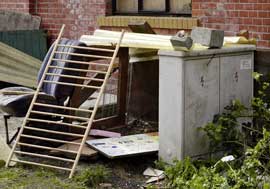K ulturwissenschaftliches Institut für Europaforschung
Nina Brodowski, M.A., Kulturwissenschaftlerin in progress... Religiöse Stadtentwicklung: Über die Symbolkraft der Architektur neuer Moscheen und ihre Wirkungsdimensionen im sozialen Nahraum In Deutschland sind Moscheenbauten ein großes Politikum. Die Debatte der letzten Jahre zeigt, wie Architektur zum Schauplatz von Identitätskämpfen im Wettkampf um Deutungs- und Handlungsmacht wird und wie gesellschaftliche Entwicklungen sich an ihr festmachen lassen. Neben diesesn diskursanalytischen Betrachtungen ist es interessant, inwiefern sich Lebenswelten in den Städten durch die Errichtung von Moscheen real verändert - oder nicht - und welche Wirkungen im Bereich der unmittelbaren Bevölkerung entstehen. Qualitative Interviews und Entwicklungsgeschichten sollen in ganz Europa betrachtet werden. Bilder europäischer Identität. Cultural turn in urban development strategies: form hardware-investment into software-solutions If we talk about European integration and cultural heritage, we have to be careful about myths of the European city itself. Values and culture are no fixed elements that can be taken for granted – they are produced in the present and in every day life. According to the definition of cultural theory, culture is regarded as a symbolic sphere of communication in which meaning is produced. This approach allows us to discuss the relationship between the terms city and culture in a broader sense, that is not limited to institutionalised events or the investment in cultural buildings or cultural heritage. Starting from this definition, urban practices themselves become much more significant than the branding “European Capital of Culture”(1)or mega-events such as MOMA exhibitions, which correspond to the needs of a specific sector of cultural tourism. During the last years, culture has become more relevant with respect to the global competition between cities. Longing for attraction force, the phenomena of using abandoned spaces culturally has already become quite relevant in urban renewal and marketing strategies. Cities like Berlin now profit from a fluent, innovative and alternative use of urban space by turning non-normative practices into cultural capital. This kind unplanned urbanism has become a soft location factor that turns cities into a favourable place for international companies and their employees.(2) What kind of individual and social perceptions of European culture form the basis of the key-note “creative” or “cultural” city? For urban development studies, the task would be to identify experiences that can be brought to fruition without emphasizing the flattering notions of the term “Creative City” too naïvely. With regard to the future and global competition, cities will have to develop strategies that correspond to the individualised life-standards and therefore have to develop models on the local level in order to keep their cities culturally vivid and attractive. In opposite to “hardware” investment in big mega-events-halls or building plans, “open-source“ solutions of sharing urban infrastructure is much more interesting, making unexpected synergies and encounters possible. Observing the urban development in Berlin, you can already see established forms of investment by big global players diminishing or even driving away alternative forms of cultural use – which therefore risk the city's own location factor. Urban development studies therefore have to examine “software-solutions” of city management in Europe that implement a low access to cultural and temporary use of urban space sustainably – making low barrier policy of urban action possible by identifying promising impulses. (1)The European Capital of Culture 2010 (Ruhr) could be considered as an exception because it has been exactly the transformation process and cultural use nowadays that was a factor in the decision. (2)One of the most attractive characteristics of modern urbanity is social and cultural diversity, not just as a condition for the settlement of creative people and industry, as Richard Florida claims, but as a constant possibility to generate new alliances, interactions and opportunities. This encounter opens the door to a range of practices, that correspond to the longing for individualised needs and life-style of the first decade of our century. At this point, we get closer to the challenge, how an European City can be part of a sustainable and tolerant European identity by acting together at an informal and every day level. for further research: Unesco-report about culture and creative industries, 2007 cities going culture; interview with cultural protagonists, march 07 Rauchfreie Zonen. |
|||||

